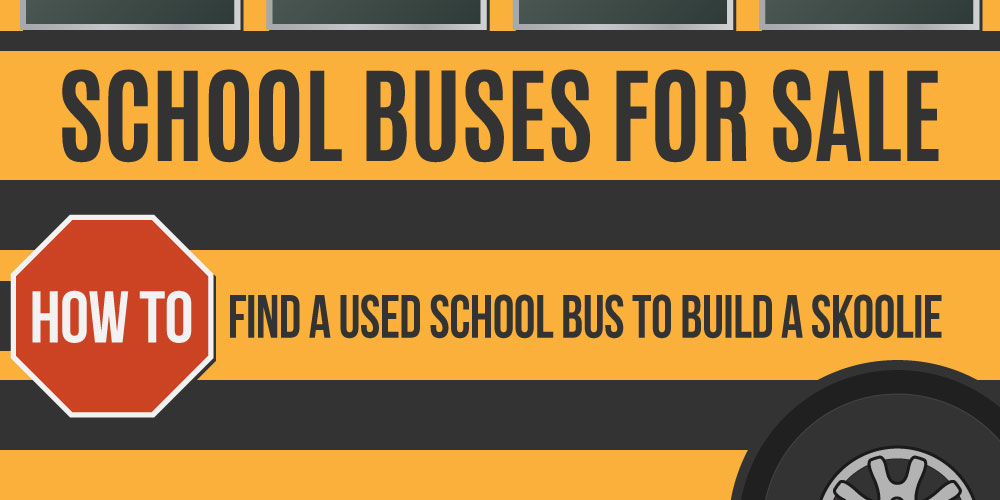
NAVIGATION
Before I decided on my tiny house, Skoolies were a serious contender for me, to the point I explored how to find a used school bus for sale to build a skoolie. The concept had a lot of appeal – a house on wheels, ready to take off whenever the mood struck.
The major draw of a skoolie, besides the novelty of living in a converted school bus (which is pretty cool in itself), is that you don’t need to buy a vehicle to tow your house. If I wanted to move my tiny house now, I’d have to take the trailer off its blocks, and have a big truck with the capacity to tow a home. While moving a tiny house is certainly possible, it’s not easy.
A skoolie, on the other hand, is ready to roll! But, as I found in my research (and ultimately, what held me back from the skoolie life) is that it can be hard to find a used school bus that’s in the right condition. There weren’t many resources on how much it cost to convert a used school bus or how to maintain a skoolie at the time. So ultimately, I decided to go a different direction, but I must admit the idea of a skoolie still appeals to me. I decided to do some more research for those who are also intrigued by the idea of a school bus tiny house.
Are you someone who wants to travel with your house? Let’s examine the skoolie lifestyle and how to find a school bus for sale.
What the Experts Say About Finding a Used School Bus for Sale

I’ve written a little about skoolies before because they share many parallels with tiny houses. After all, a skoolie is really a tiny house built into a school bus.
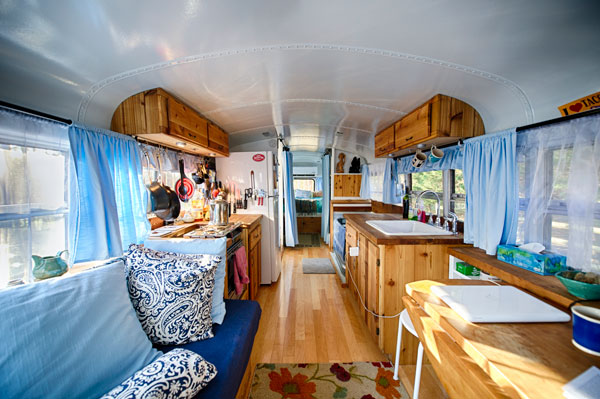 I liked the idea of a skoolie because it combined the truck and house in one—move your home around without needing a separate vehicle and at a much cheaper rate. Some of them are as low as $4000—less than the down payment on a truck if I wanted to take my tiny house on the road. There are also fewer regulations when building a house on wheels, making a skoolie a good option for those new to the tiny life.
I liked the idea of a skoolie because it combined the truck and house in one—move your home around without needing a separate vehicle and at a much cheaper rate. Some of them are as low as $4000—less than the down payment on a truck if I wanted to take my tiny house on the road. There are also fewer regulations when building a house on wheels, making a skoolie a good option for those new to the tiny life.
In my research, I connected with Chris at Skoolie Livin. It’s an excellent resource for all things skoolie-related. I wish I had known about the site back in the day when I was considering a skoolie. He shared a lot of info about finding a used school bus for sale in decent condition (and how to avoid expensive mistakes).
When he was looking for a bus to convert, Chris shared that they found one locally on Craigslist—a BlueBird TC1000 for $7,000. Ultimately, they decided that the rust and condition (as well as the sketchy circumstances) didn’t seem right. Then they drove from Indiana to Wisconsin for another Craigslist BlueBird with a DT360 engine but were disappointed again by rust and lights that didn’t work.
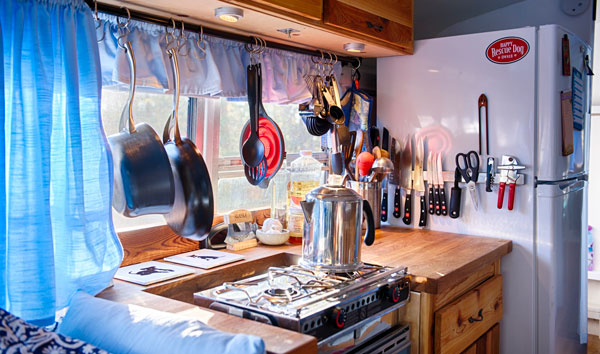 Despite being skoolie newbies, they now had a few ideas of what to avoid in their search, so they spent some time searching for options online. After many photos and phone calls, they ultimately found their first school bus to convert into a skoolie. For only $4000, they purchased a great bus from a diesel mechanic with a DT466 engine and low mileage (189,000). With regular upkeep and no rust, the bus was a great deal, saving them thousands in fixups.
Despite being skoolie newbies, they now had a few ideas of what to avoid in their search, so they spent some time searching for options online. After many photos and phone calls, they ultimately found their first school bus to convert into a skoolie. For only $4000, they purchased a great bus from a diesel mechanic with a DT466 engine and low mileage (189,000). With regular upkeep and no rust, the bus was a great deal, saving them thousands in fixups.
The best way to get a handle on a bus’s condition is to get out there and really look. Don’t go with the first bus you find—listen to your gut, not your excitement! Remember, you’re buying the foundation of your future house. Be as discriminating as possible as you check the condition.
If you buy a skoolie that’s not yet been converted into a tiny house, there will probably be some issues that crop up during the process, of course. Mitigate what you can by taking the bus for a test drive, inspecting for rust holes, and checking for a solid foundation. Look at all the components—the chassis, ribs, brakes, wheels, and tires!
Best Places to Find a Used School Bus for Sale


As I discovered in my search for a skoolie, they can be tough to find. Over the last several years, there have been more resources online that have cropped up—many of them are extremely helpful, and I wish they’d been as available back when I was searching.
- School Bus Conversion Main Classifieds Page
- Public Auctions
- Online Marketplaces
For more details and an excellent resource, I suggest checking out this page on finding a school bus. It lists all the general auction options and includes details to help you find local public auctions in your state. Although many online resources feature sellers from all over, it’s always convenient to buy locally, but that can often limit your options. Before you travel to pick up a school bus, be sure the condition is good enough that it will make it to your final destination!
What to Look for When Evaluating a Used School Bus for Sale


There are several factors you should look at when you evaluate a school bus. Price is important, of course, but it shouldn’t be your only factor. Condition is just as critical (if not more so) and ultimately can help you save down the road.
Here’s what to look at as you evaluate a used bus.
Size


Like deciding on the right size for a tiny house, you’ll need to decide on the right size for your school bus. This means examining how much space you’ll need for your lifestyle. If you’re single or buying for a couple, a “short bus” may be plenty of room. Families and people who prefer more square footage may need a full-size school bus. You can take this quiz to help you determine the ideal skoolie size for your needs.
SHORT BUS


Look for the 4-6 window buses, which are usually a “van-type.” If you’re looking for a skoolie with more room and more power, the 7-8 window school buses are an excellent choice. These short buses can be quite beautiful when converted and are a tiny living favorite!
MID-RANGE BUS


Watch for buses with 7-10 windows (again, these are considered “van-type” buses. These buses are often the cheapest option, and some are even less expensive than the short buses OR the full-size ones. Keep in mind, though, these buses have taken off in popularity, and it’s harder and harder to find these hot commodities. Don’t give up; your perfect skoolie is out there!
FULL-SIZED SCHOOL BUS


Building a full-sized skoolie will range between $25,000-$35,000, including the bus. The ideal full-size bus features 10-13 windows. These big buses are amongst the easiest to find because there are so many to choose from. Schools retire buses when they still have a lot of life in them, so you should find the perfect bus in nice condition.
Mileage


While finding the right size school bus is vital, mileage is a big factor too. The mileage correlates with the wear and tear on the engine. Occasionally you can find an outstanding shell with a shot engine, but if you do that, you’re going to add in high labor costs (unless you are very familiar with the mechanical work required with a diesel engine).
So your best bet is to look at an engine with decent mileage. For details on how much mileage is “normal on a bus,” check out this mileage guide. Make sure it runs great and doesn’t require much more than regular oil and filter changes. There are plenty of school buses for sale, so don’t settle for something with tons of mileage that may need an engine replacement.
Chassis


Check out the chassis on the school bus. Make sure you don’t see much rust, especially if you’re purchasing a bus that’s driven through a lot of cold-weather conditions. Salt and ice can really cause damage to the chassis, and you may be looking at sandblasting and rust treatment. Get underneath the bus and check it out before you buy.
Think of the chassis as your foundation. You wouldn’t buy a house with a lot of foundational damage. This is creating a solid frame for your home, so don’t settle for damage. Check the floor’s ribs as well—they should be solid, not rusted through or weak. The floor should feel firm.
Buses have a rubber floor and plywood over the metal bottom. The metal is visible from under the bus. There may still be surface rust underneath the plywood floor if there are no holes, but this should be expected and isn’t as big of a concern.
Brakes


School buses feature two types of brakes—air brakes or hydraulic brakes. Some drivers prefer one over the other, and most newer buses feature air brakes. Air brakes stop a little quicker than hydraulics, so some drivers feel they’re safer. Mechanics claim that hydraulic brakes are harder to work on and update.
The most important thing is that whichever type of brakes your bus features, they should work correctly. Test the brakes before you buy. Make sure there are no squealing or grinding noises that can indicate a braking concern.
Body and Exterior


Now, especially if your school bus was driven through wet weather, ice, and snow, you may see pinging, dents, and rust. Overall, this isn’t something you should settle for. A little rust can be fixed up with bodywork, but it is costly.
Significant rust and especially holes are bad news! It’s hard to completely fix up body damage, and you’re always going to be contending with it. It’s a losing battle. Once again, it’s easy to fall in love with a bus and assume you will “deal with” the rust later. There are so many options out there; it’s just not worth the hassle.
Tires


Tires are one of the most essential items to look at when you’re deciding to buy a used school bus to convert into a skoolie. Your tires are especially important if you plan to take your skoolie on the road for travel. Buses can struggle with off-roading, so good tires are needed for traction. Tires also improve your gas mileage and offer a more comfortable ride. Most importantly, tires are a safety issue.
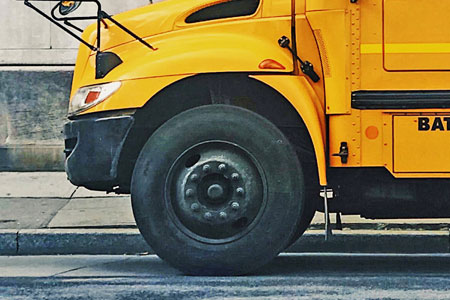

So, how expensive are bus tires? Well, generally, a $4000 school bus turns into an $8000 investment when you need new tires. School bus tires aren’t cheap, and you’ll be looking at $3000-$6000 for replacement (and generally, you’ll want to replace ALL the tires at once).
What is the lifespan of school bus tires? Bus mechanics usually measure the life of school bus tires by years instead of mileage like cars. Most bus tires should last between 10-15 years with proper maintenance. Keep them properly inflated, avoid letting them sit for long periods (use tire covers when parked for longer durations), and only wash them with soap and water, not Armor-All or harsh chemicals.
Other Items to Check


Check the lights on the bus. All the brake and safety lights should work correctly. Headlights and taillights are crucial when you’re driving such a large vehicle. You’ll want to make sure the mechanics work—door latches, windows, and other items. While these aren’t make-or-break issues, small damages can add up and become expensive (or lead to a ticket).
When you look at the interior, check the seams for any rust. Unless it’s raining when you’re checking out the bus, you might not notice leaks, but rusting is a telltale sign. Aside from the seats on a bus, the interiors are often quite simple, which is why used school buses are an excellent framework for tiny homes.
When it comes to the seats, what do you do with all these bus seats? You can take them to a scrapyard, of course, but many people have had luck selling them on Craigslist or Facebook Marketplace. Some skoolie owners keep a few of the seats to add to the charm. They can make comfy seats for your kids as passengers, and they’re charming mini couches or bench seating for a table.
Understanding Different School Bus Engines


It’s important to understand the difference between school bus engines when looking for a school bus to buy and convert into a skoolie. Most engines are diesel, making them slightly different from a car or truck engine (but not too much more maintenance if you know the basics). Here, I’ve broken down the most common school bus engines.
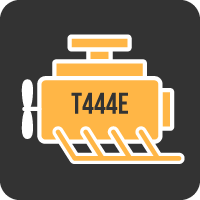

T444E
The T444E is a common engine found in small to medium-sized school buses. It’s reasonably reliable and has a similar power output to the DT466E models.
- Common engine
- Reliable
- Considered to be a Ford Maxxforce engine.
- Costly rebuild, as the sleeves cannot be changed out, like the DT466E.
- Smaller fixes are a similar cost to a DT model.
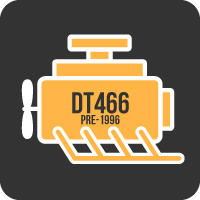

DT466 (Pre-1996)
The DT466 was made through 1996. It’s considered one of the best engines for a school bus, and ideal for skoolies. It’s very reliable and lasts a long time. It’s also one of only a few engines that you can completely rebuild without removing the bus’s motor. Piston sleeves are easily changed out.
- Extremely reliable.
- Long-lasting.
- Easy to rebuild and maintain.
- Easy to change out piston sleeves without block removal.
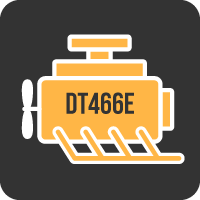

DT466E
The DT466E was made from 1996-2004. It’s essentially the same as the DT466 with an ECU on the engine, electronic injectors, and a single, high-pressure oil line. The added benefit of the DT466E is that it has a plug for a diagnostic as well. This is a popular choice, because it’s a newer engine with electronic benefits, but doesn’t have the extra newer emissions regulators.
- Extremely reliable
- Long-lasting like the DT466.
- Easy to rebuild and maintain.
- ECU on the engine.
- Electronic injectors and high-pressure oil line.
- Plug for diagnostics.
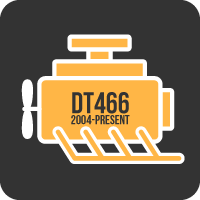

DT466 (2004 – Present)
The newer DT466 was built after 2004. The manufacturer dropped the “E” in the title but kept all the electronic features from the DT466E version. Since 2004, the DT466’s have an added EGR for emission controls, per government regulations.
Reliable.
- Long-lasting like the DT466E and original DT466.
- Easy to rebuild and maintain.
- ECU on the engine.
- Electronic injectors, high-pressure oil line, and plug for diagnostics.
- EGR for emission control.
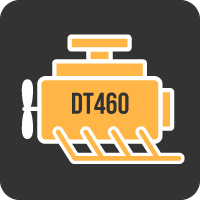

DT460
The DT360 is considered to be a cousin of the DT466 and shares many of the same features. That said, it has less horsepower and torque displacement. The tradeoff is that it’s more fuel-efficient.
- Similar to the DT466.
- Lower horsepower and torque displacement.
- More fuel-efficient than the DT466.
- Reliable.
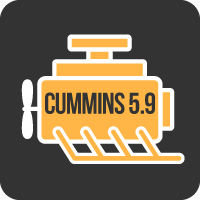

Cummins 5.9
The Cummins 5.9 is often found in larger, full-sized school buses. These are good engines for a regular bus, but unfortunately, people find the engine weak and undersized when they build a school bus into a skoolie. The Cummins 5.9 is a good engine in a small or mid-sized skoolie as it can support a smaller load.
- Good engine for small to mid-sized skoolies.
- Common in larger full-sized busses.
- Often too weak and undersized for a full-sized skoolie build-out.
- Often paired with AT545 and MT643 transmissions.
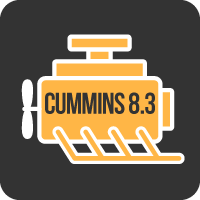

Cummins 8.3
The Cummin’s 8.3 is another engine that’s often found in full-sized school buses. These engines are great—reliable and able to support the more considerable weight of a full-sized skoolie build-out. It’s rare to find them in smaller buses, but they’re an excellent engine.
- One of the best engine options for full-sized skoolies.
- Rarely found in smaller or mid-sized school buses.
- Often paired with the MD3060 transmission.
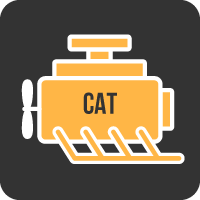

CAT Engines
CAT engines are great engines as long as they are maintained (and have been maintained) properly. If they aren’t maintained, they become a money pit very quickly.


Mercedes Engines
Mercedes engines are somewhat common, and they’re very much like a Mercedes Benz. They’re seen often, but they’re expensive to fix. Along with the CAT engines, these aren’t ideal for skoolie builders because they require finding someone specific to work on them.


Detroit Diesel 8.2L
These are another fairly common engine, but these aren’t reliable AT ALL. They’re finicky and hard to maintain. If you’re looking to buy a used bus to turn into a skoolie, I would avoid anything with a Detroit Diesel 8.2L engine.
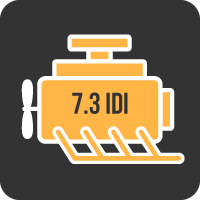

7.3 IDI Engine
These are good engines, but they’re older engines found in International school buses in the 80s and 90s. They’re pretty rare, and at this point, I would question the practicality of maintenance, even if the engine was still working.
What You Need to Know About School Bus Transmissions


The transmission is critical. Although not as expensive a replacement as an engine, it’s good to be sure that the transmission on your school bus is reliable and has been adequately maintained. Of course, the question with transmissions is always manual vs. automatic. More modern school buses almost always have an automatic transmission. Pre-2000 buses may feature a manual transmission (especially the really old collector buses), but automatic transmissions are common for the most part.
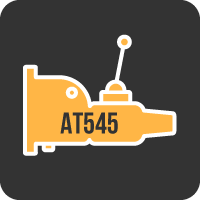

AT545 School Bus Transmissions
The AT545 is the most common transmission found in school buses. It’s important to note that it lacks a torque converter, so you have to rely on the brakes a lot when descending steep hills and mountains. This can lead to overheating and wear on the brakes, especially for inexperienced drivers. It also tends to slip a bit when climbing (causing potential overheating). If you don’t plan on taking it to the mountains, this is a solid transmission. Because it’s so common, replacement parts and maintenance are simple.
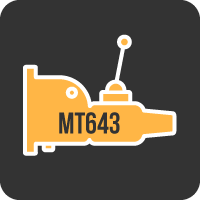

MT643 School Bus Transmissions
The MT643 is a reliable transmission, but rarer. It’s similar to the AT545 but a little beefier. This is a very dependable school bus transmission. You can easily convert from an AT545 to an MT643 with very few issues if you have a DT466 engine. The MT643 has a torque converter when you move into 3rd and 4th gear, making it a better choice for mountain driving.


MD3060 School Bus Transmission
This transmission is a good choice because it offers higher speed capabilities than the MT643, resulting in better mileage per gallon when you’re traveling. The biggest drawback of the MD3060 is that it’s costly to fix or replace. If you’re looking to compare the MT643 and MD3060, there’s a breakdown here.


Other Transmissions for School Busses
There are 1000, 2000, and 3000 series transmissions out there that are all really good 5 or 6-speed automatic transmissions. The difference between the numbers indicates the amount of horsepower and torque in the engine that the transmission can handle. For an excellent high-level summary on school bus engines and transmissions, do further exploration here.
How Much Should A Converted School Bus Cost?


So when we combine all these factors—the condition, the engine, the transmission, the tires, we’re left with the million-dollar question: how much should a used bus cost?
As you can see, there are several factors, and it’s hard to pinpoint an exact amount. To give you a ballpark figure, “Used school buses for sale with a low amount of surface rust and between 80,000 and 180,000 miles should cost between $3,000 and $10,000,” according to my friend Chris at Skoolie Livin.
Like most purchases, buying a used school bus means you get what you pay for. If you want to buy a used school bus for cheap, you’re likely going to need to do some serious research and searching to find a high-quality bus that is built to last. It’s essentially a house AND a vehicle, so you should plan accordingly.
When you try to negotiate a price, keep in mind that school bus sellers are often highly motivated because school buses are large vehicles that require a lot of space. They have become more popular as people embrace the skoolie life, though, so you may have competition. Start low with your offer but keep it realistic. Often with a little bit of back and forth, you’ll settle on a price that both of you are happy with. It’s a good idea to only bid on a bus if you’re willing to pay the full asking price because some sellers won’t ever come down (but it doesn’t hurt to ask)!
Tips for Buying a Used School Bus


- Know the size and kind of bus you want.
- Balance your ideal school bus with being flexible about your options.
- Avoid getting emotionally attached to ONE bus.
- Remember that used buses are sold for a reason—choose wisely.
- Get a professional opinion on the condition of the engine.
- Test drive the bus and do a thorough inspection (including the underside).
Hopefully, this gives you a nice overview before buying a used school bus to convert into a skoolie. To this day, I still have a soft spot for the idea of living in a converted school bus. It’s so freeing to take your life on the road whenever you feel the urge.
If you’re hoping to buy a used school bus to turn into a skoolie, do your research. Skoolie Livin has been an excellent resource for me, and they have a handy help page to check out for more details and answers to your school bus shopping questions.
Your Turn!
- What size school bus would you prefer for trying the skoolie life?
- What aspects of skoolie living most appeal to you?
 Where To Find A Bus
Where To Find A Bus Evaluating A Used Bus
Evaluating A Used Bus All About Engines
All About Engines Bus Transmissions
Bus Transmissions
I find it helpful to know that I should not bother buying a used school bus with rust and holes because it’s a losing battle. My boyfriend and I plan to purchase a used school bus to convert into an RV this year. I’ll take note of the tips you mentioned here to ensure we choose the right used school bus to invest in. Thanks.
Thanks for the tip that getting a professional opinion on the engine is a good way to shop for used school buses. I think buying one would be perfect for excursion activities of my neighborhood association someday. I am quite surprised at how active mine is when I moved into my new home so I’d like to be able to be of great use for them in case there is a major event that involves traveling.
Thanks for letting me know that I may have to save up to 35,000 USD to convert a used bus into a skoolie. I really want the biggest one possible so it won’t be anything less than a full-sized one for me. I’ve always wanted to have one of these for when I go camping with my family. All my siblings have fancy RVs and trailer trucks, I can only imagine the surprise on their faces when I roll up to our next family camping trip on a converted bus of my own. https://transitsales.com/products/
I’m in my early 60’s, been travlin’for decades and can’t seem to settle in one spot. Time for a skoolie. My thing is,why pay rent, when you own it? I’ve seen videos on conversion, and one of a kind. Not real expensive when you do your research. It’s a can do thing!
Hello mrs mr.
I use google translator, sorry.
I research
– A 30-year-old mini school bus (minimum)
– Who has 9 places (maximum)
– Who runs on gasoline
– Which does not exceed 3.5 tons (3500kgs)
– And who would possibly have an electric platform for the rise of wheelchairs.
Thanks in advance.
This request is sincere and genuine.
Cordially.